With its excellent stability and security, the Bitcoin network not only gives BTC lasting value, but also accumulates impressive capital. With the approval of the BTC spot ETF, the massive influx of traditional funds has pushed its market value to exceed US$1.3 trillion.
However, people often overlook the difference between Bitcoin as a network and BTC as a digital asset. The key to realizing Bitcoin's full potential is to harness the power of the network to transform Bitcoin from a mere store of value to the core of the Bitcoin economy. infrastructure.
In December 2022, the emergence of the Ordinals protocol brought an unexpected innovation to the Bitcoin ecosystem.
The popularity of "Inscription" not only focused the attention of the public and developers on the Bitcoin ecosystem, but also allowed people to see the possibility of unleashing the huge potential of Bitcoin. In just 12 months, the total market value of Ordinals-based Bitcoin inscription tokens exceeded $3.5 billion, showing an astonishing growth rate. Even today, the daily NFT transaction volume on the Bitcoin network is greater than Solana.
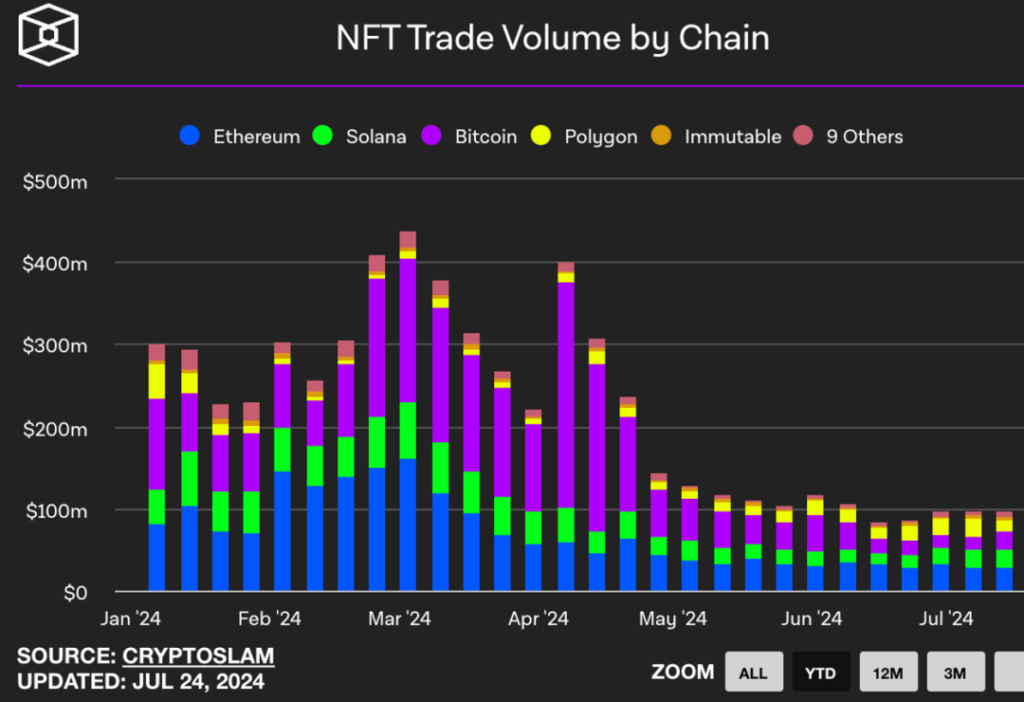
However, the market’s high expectations for the Bitcoin ecosystem have also brought about setbacks.
The rapid cooling off of the inscription craze, the underperformance of the highly anticipated Runes after its launch, and the dramatic turn of the Merlin project from the peak of TVL to the plummeting price of the currency after the coin was issued, have all made the market fall into doubts about the future of the Bitcoin ecosystem. confused. With the rise of Memecoin, market attention has also been greatly shifted.
This wave of ups and downs in the Bitcoin ecology is just like the "high temperature annealing" process in the semiconductor process. This process is designed to release stress within the material and increase its ductility and toughness.
We believe that this principle also applies to the development of the Bitcoin ecosystem. After the FOMO sentiment subsides, which projects are still actively being built? What is the development direction and trend of the Bitcoin ecosystem?
This article will classify by track, deeply explore the development trends and representative projects of the Bitcoin ecosystem, analyze how they respond to challenges, and the role they play in the Bitcoin ecosystem.
BTC Layer
As the first successful cryptocurrency, Bitcoin's original network design focused mainly on security and decentralization. This design also brought inherent limitations in programmability and transaction speed.
Although upgrades such as SegWit and Taproot have improved these problems to a certain extent, the Ordinals asset issuance boom has clearly exposed the limitations of the network: severe network congestion, rising gas fees, and an urgent need for more powerful smart contract functions. .
As users increasingly demand scalability and additional functionality beyond Bitcoin’s original capabilities, the Bitcoin ecosystem begins to explore various scaling solutions. Most of these solutions draw on the expansion experience of the Ethereum ecosystem and adopt a modular layered architecture, thus giving birth to the concept of "Bitcoin layer".
This architecture includes L2 layers (such as Lightning Network, sidechains, and solutions such as Rollup), which are designed to increase transaction throughput by moving transactions to off-chain processing while maintaining a secure connection to the main chain;
The settlement layer further optimizes the performance and functionality of specific application scenarios; the data layer provides data availability and storage solutions; and the application layer develops various decentralized applications based on the underlying infrastructure.
This multi-layer architecture improves programmability, making more complex smart contracts possible; significantly increases transaction processing speed; improves data availability; and also expands ecological possibilities.
In the currently most competitive Bitcoin Layer 2 track, most adopt the EVM technology stack and cooperate with cross-chain bridges to solve the expansion problem of Bitcoin. Although this method can quickly build an ecosystem in the short term, these solutions are inconsistent with Bitcoin. The currency main chain lacks strong binding relationships and is highly dependent on cross-chain bridges, which increases potential security risks;
At the same time, using Ethereum's account model and EVM to expand UTXO-based Bitcoin is inconsistent with the concept of "Bitcoin Native" to some extent. There are roughly three types of L2 from a technical perspective:
- Rollup system : This type of scheme attaches great importance to the verifiability of Layer1 and is committed to extending the security of Layer1 to Layer2.
- Side chain system : The advantage of this type of solution lies in its relatively mature technology and ecosystem.
- Client-side verification : This type of solution emphasizes the use of Layer1's native data availability (DA).
While pursuing Layer1 verifiability, Rollup solutions control users' trust costs through a variety of modular designs. This method not only ensures security, but also reduces the user's trust burden to a certain extent.
In contrast, although the side chain system has advantages in technological maturity, it may face more challenges in inheriting Layer 1 security.
Although the client verification scheme can ensure that all ledger records are performed on Layer 1 to a large extent, it requires users to maintain a high degree of trust in the client. This trust cost is endogenous and difficult to completely eliminate.
Rollup
The emergence of Ordinals makes the Bitcoin network a highly secure database that can store various data, including Rollup certification data.
However, simply uploading Rollup's certification information to the BTC network is not enough to ensure the validity and correctness of Rollup's internal transactions. The core problem faced by BTC Rollup is verification. At present, most BTC rollups may choose the sovereign rollup (client-side verification) method, that is, the verifier synchronizes all the rollup information off-chain and checks it by themselves.
The limitation of this method is that it cannot fully utilize the most powerful feature of the Bitcoin network - the PoW consensus of hundreds of thousands of nodes to ensure the security of rollup. The ideal state is for the BTC network to actively verify the proof of Rollup, similar to the way Ethereum does, and have the ability to reject invalid block data.
At the same time, it is also necessary to ensure that the assets in Rollup can still be trusted and withdrawn to the BTC network through safe escape channels under extreme circumstances (such as the Rollup node or sequencer being down for a long time or refusing to accept transactions).
1. Bitlayer
Bitlayer is the first Bitcoin Layer 2 network based on the BitVM solution, aiming to provide the same security as Bitcoin while supporting Turing-complete computing power.
The core technological innovation of the project lies in the use of the latest BitVM computing regularization and OP-DLC bridge, which solves the three main challenges faced by Layer2:
- Trustless two-way anchoring: Combining OP-DLC and BitVM bridge enables trustless two-way flow of assets between the Bitcoin main chain and Bitlayer
- First Layer Verification: Inheriting Bitcoin’s Security with BitVM
- Turing Completeness: Supports multiple virtual machines to achieve an environment that is 100% compatible with the Ethereum Virtual Machine (EVM)
Bitlayer launched a $50 million ecological incentive program on March 29 this year to attract early builders and contributors. At present, many native projects have joined the ecological construction, including DEX, permissionless lending agreement, MEME, etc.
Recently, Bitlayer announced the completion of $11 million in Series A financing, led by institutions such as Franklin Templeton, becoming the first Bitcoin infrastructure project to receive investment from an ETF-licensed institution.
At present, the project has been launched in the user center, including three modules: novice tasks, advanced tasks and daily tasks. Users can earn Bitlayer points by completing tasks and obtain exclusive racers as racers. In the future, Bitlayer plans to distribute $BTR airdrops based on user points and racer levels.
Bitlayer's innovative technical solutions and active ecological construction strategies make it one of the Bitcoin Layer 2 projects worth paying attention to.
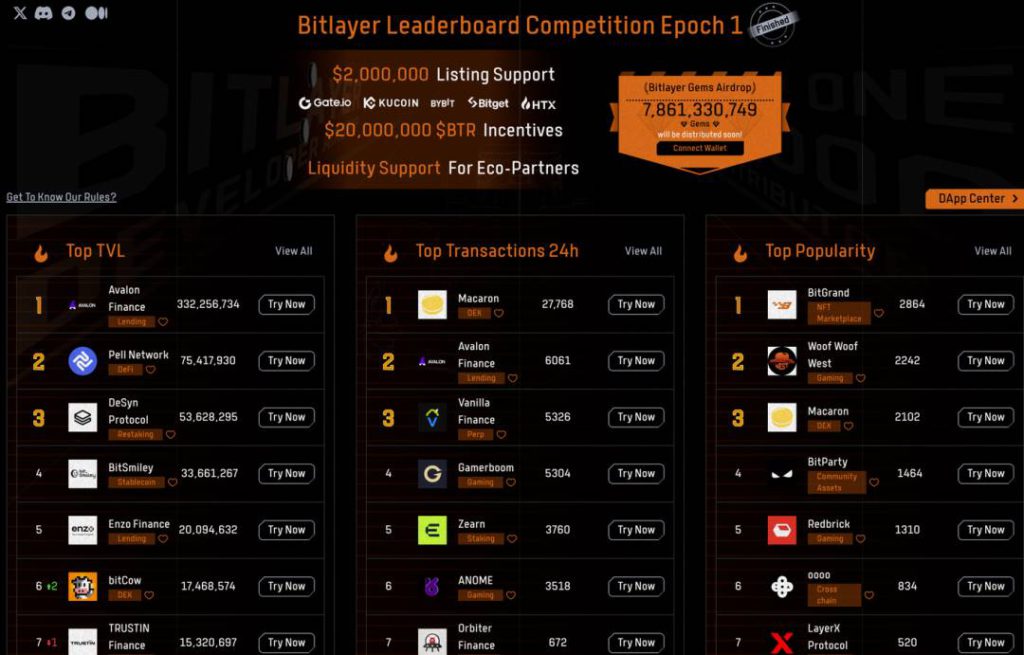
2. B² Network
B² Network is an EVM-compatible Layer 2 on BTC. It provides an off-chain trading platform that supports Turing-complete smart contracts, improving transaction efficiency and reducing costs.
By integrating zero-knowledge proof (ZKP) technology with Bitcoin’s Taproot, B² Network ensures enhanced privacy and security of transactions. The network aims to develop Bitcoin into a dynamic platform, setting the stage for innovative applications such as DeFi and NFT, and is suitable for traditional Bitcoin assets and emerging Bitcoin derivative assets.
B² Network’s technical architecture consists of two layers:
- Rollup layer: Using ZK-Rollup and zkEVM solutions, it is responsible for executing user transactions and outputting relevant certificates.
- Data Availability (DA) layer: including decentralized storage, B² nodes and the Bitcoin network, responsible for permanently storing Rollup data, verifying zero-knowledge proofs, and performing final confirmation on Bitcoin.
As a key component of B² Network, decentralized storage serves as a repository for ZK-Rollup user transactions and certificates, which improves network security, reduces single points of failure, and ensures data immutability.
Currently, B² Buzz has entered the third stage and launched Buzz Farming, cooperating with well-known BTCFi projects such as Babylon, Unirouter, Lombard, and Bedrock to provide diversified income strategies.
Buzz Farming benefits include:
- Get 14,580 B² tokens from the B² network every day.
- Rewards from BTCFi cooperation chains and important partners, including Babylon, Aptos, Bedrock, Lombard and many other projects.
As B² Network's native revenue aggregator, Buzz Farming will continue to bring more revenue and paths to users, reflecting the project's innovation in the DeFi field.
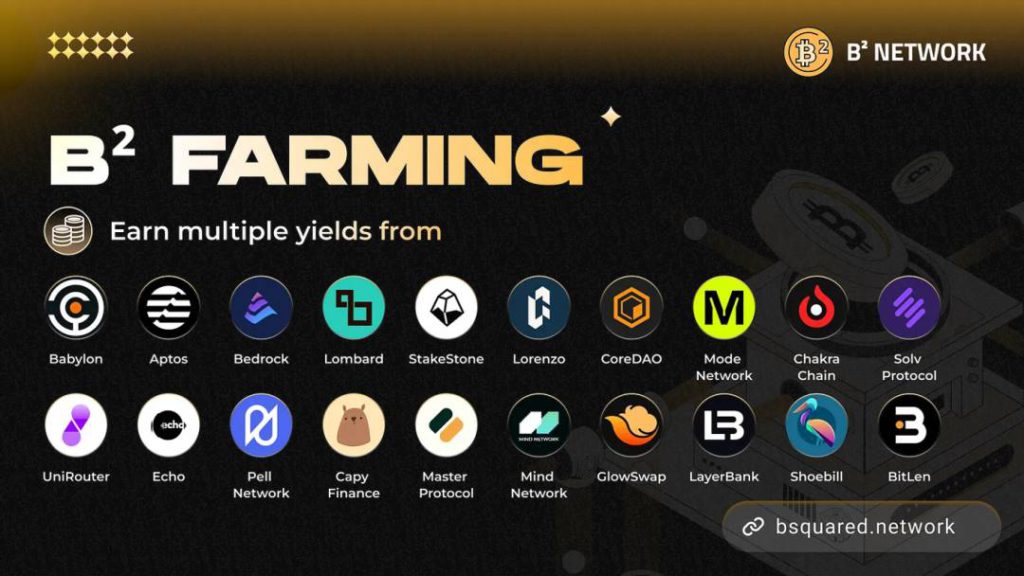
3. QED
QED Protocol is a ZK rollup on BTC, implemented based on zkevm. Unlike other zk rollups, QED did not choose to generate zk proof for the entire Rollup transaction, but only established ZK proof for the withdrawal transaction from the rollup to BTC L1, and verified these proofs on BTC L1 by composing the instruction code into a logic circuit.
Each user's public key acts as a custom ZK circuit, with a "smart signature" function similar to smart contracts.
Similar to BitVM's idea, QED Protocol combines instruction codes into logical circuits to verify the ZK proof of withdrawal transactions on BTC L1. This type of logical circuit will contain 1,000 UTXOs. Although direct verification is achieved, it is costly. huge.
Decentralized applications built on QED can prove transactions locally, providing users with unlimited calculations for a fixed gas fee.
Founder Carter Feldman said that QED can process more than 150,000 transactions per second and plans to launch a test network in the next 3-4 months. The mainnet will be launched after the community reaches a consensus and launch native tokens to encourage high-performance infrastructure. implement.
QED completed a $6 million seed round of financing, with Blockchain Capital as the sole investor, and its valuation reached at least $100 million. It also previously received US$3.25 million in Pre-seed round and US$1.35 million in Angel round financing.
The ZK technology used by QED is STARK technology, which is a pioneer project of Starkware<>BTC and received early investment and support from Starkware.
4.GOAT Network
GOAT Network is a BTC Rollup Layer2 launched by ZKM, a project incubated by MetisDAO. It is the first decentralized Bitcoin L2 that shares network ownership.
Technically, the Optimistic Challenge Protocol (GOAT-OCP) is introduced, the BTC instruction code provided locks the native security mechanism to ensure security, and ZKM Entangled Rollup is used as a universal settlement layer to improve transaction inclusion and finality.
GOAT Network can support direct deposit of assets without introducing additional cross-chain bridges, and protect assets in the decentralized Sequencer network.
The development team comes from MetisDAO. Metis is currently the only Ethereum second-layer project that implements a decentralized sequencer. They have also brought this technical advantage to BTC Layer2. The decentralized Sequencer network allows any Bitcoin holder or be locked into a node or delegated to an existing node
At present, GOAT has obtained 5,000 BTC commitments from five institutional node operators, and plans to start with seven node operators and expand the suite to dozens of nodes in the future.
Potential benefits of participating in the GOAT Network include:
- Gas fee in BTC
- Mining rewards for GOAT tokens
- Returns generated by yBTC (the receipt token after locking BTC on the GOAT network)
- yBTC can unlock more revenue opportunities in the GOAT network ecosystem
The first phase of the decentralized sorter activity has now been launched. Users can connect wallets (required to hold 0.001 BTC), social information, and complete social tasks
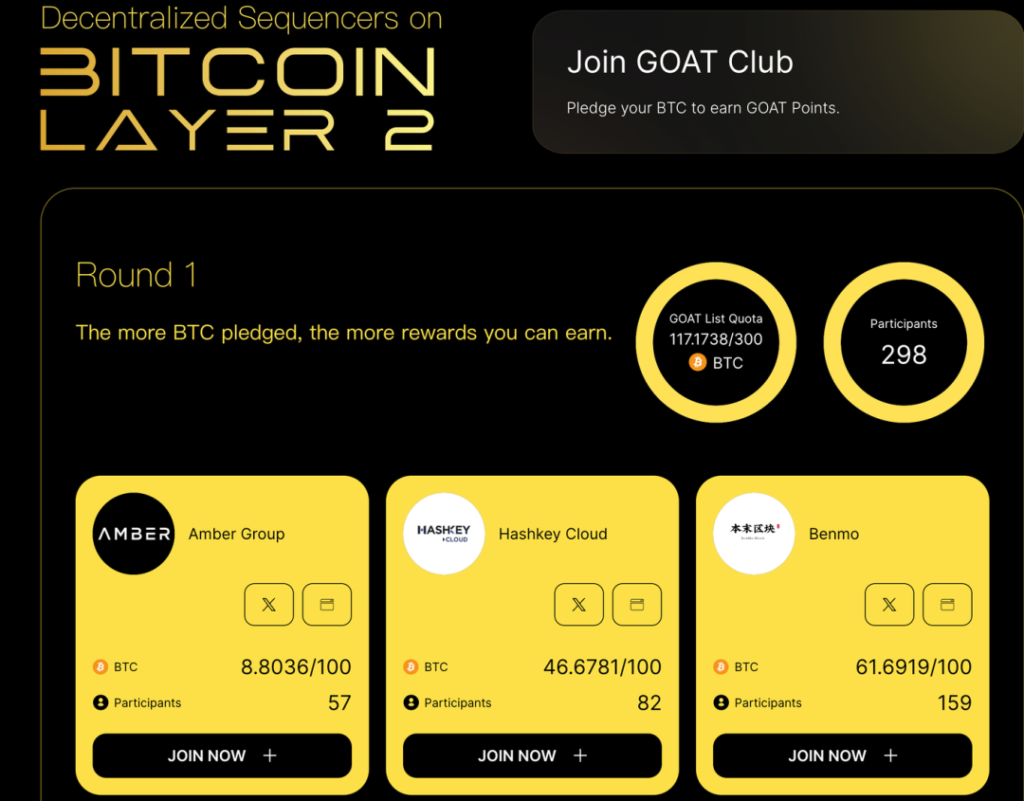
5.Mezo
Mezo is a Bitcoin Layer 2 network that aims to promote the transformation of Bitcoin from a "savings technology" to a circular economy.
The project uses a unique Proof of HODL mechanism, allowing users to protect the network by locking BTC and MEZO tokens and verifying transactions.
Mezo uses the CometBFT consensus mechanism, combined with the innovative concept of proof-of-hold. Users can lock BTC on Mezo. The longer the locking time, the higher the HODL score, allowing them to contribute to network security and earn revenue when the mainnet is launched.
The project was launched by entrepreneurial studio Thesis. The team has extensive experience in BTC ecological development and has developed the tBTC project.
According to Mezo’s official website, the current number of users is close to 12,000, and the total number of pledged BTC has reached 2,333.
Mezo recently announced the completion of a new round of funding of $7.5 million, bringing total funding to $30 million. The new funding will be used to expand adoption of the network, including integrating more products such as Bitcoin staking platform Acre.
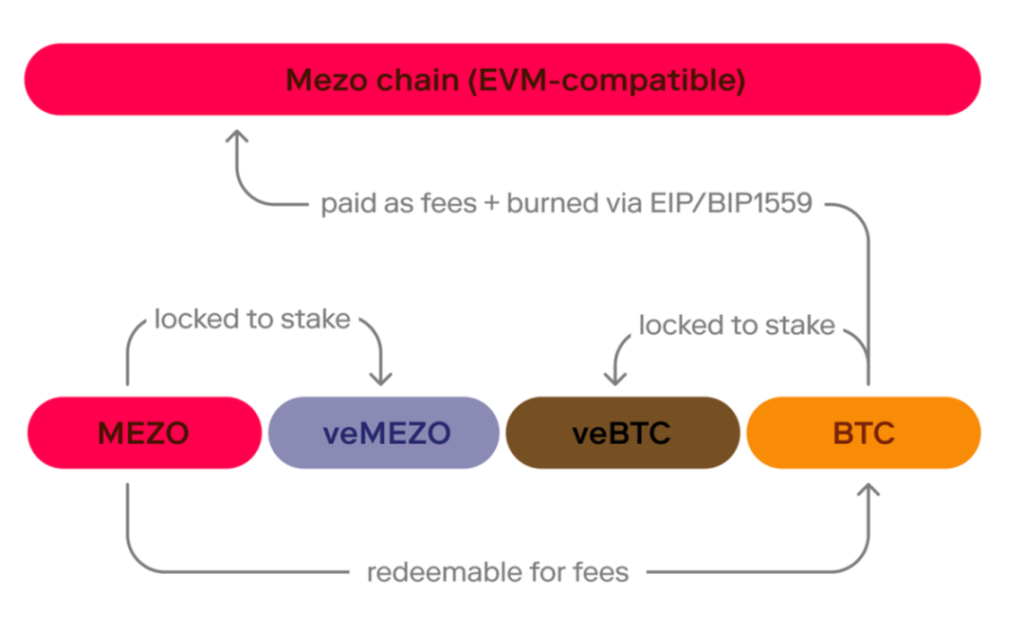
6. Bitfinity Network
Bitfinity Network EVM is a blockchain compatible with Ethereum built on Internet Computer (IC) and developed using Solidity language. Developers can deploy Bitcoin, Ordinals and BRC-20 smart contracts written in Solidity through Bitfinity, which is expected to enhance the utility of Bitcoin.
Thanks to IC's unique architecture and Chain Key technology, Bitfinity Network EVM is more efficient than traditional EVM. The storage capacity and processing speed on the chain are comparable to traditional network services, and there is no need to pay gas fees.
Bitfinity plans to integrate Ethereum and other EVM-compatible chains by executing light clients on the IC, which requires adapting the network protocol to interface with the other chains' full nodes and synchronize the entire blockchain.
The project supports connecting ICRC-1 tokens and ERC777/ERC20 tokens, as well as Bitcoin as an ICRC-1 token.
At the beginning of this year, it completed US$7 million in financing at a valuation of US$130 million.
Token economy: BITFINITY is the official project governance token approved by Bitfinity DAO and the native token of Bitfinity EVM. The total supply is 1 billion and it is an ERC-20 token.
7. Arch Network
Arch Network is an innovative Bitcoin-native programmability solution. Different from traditional L2, it aims to directly introduce programmability functionality into the Bitcoin network.
Arch is a parallelized PoS network that uses ZK proofs to enhance Bitcoin’s native programmability. The network consists of Rust-based zkVM (ArchVM) and a decentralized validator network.
The project draws inspiration from Solana and SVM (Solana Virtual Machine) and does not rely on any bridges or L2. Arch has three characteristics: programmability , parallel execution speed , and trustless interoperability and composability .
In the Arch network, asset transfers and state changes on the Bitcoin chain occur on Bitcoin L1. Arch leverages ordinal numbers via state chains to commit state changes in a single transaction, thereby reducing fees and ensuring atomic execution.
Arch’s charging model includes infrastructure processing fees and dynamic pricing mechanisms. Infrastructure processing fees are charged for each BTC transaction, including deployment of smart contracts, transactions, Mint NFT and other operations. The dynamic pricing mechanism is similar to fast lane tipping and is adjusted based on network congestion and transaction complexity.
Arch Network completed a US$7 million seed round of financing, led by Multicoin Capital, with participation from OKX Ventures, CMS Holdings and others.
Currently, Arch's products and roadmap are still under development, and a specific launch timetable has not yet been announced.
BTC sidechain
The concept of sidechains originated from the paper "Enabling Blockchain Innovations with Pegged Sidechains" published by Adam Back et al. in 2014. The concept aims to improve Bitcoin’s service capabilities by allowing assets to be transferred between multiple blockchains.
Sidechains are essentially independent blockchain networks that execute in parallel with the main chain and have the following characteristics:
- Strong customization : specific rules and functions can be designed to improve scalability and flexibility.
- Independent security mechanism : Maintain its own security mechanism and consensus protocol, and security depends on the side chain design.
- High degree of autonomy : Compared with the main chain, it has greater design freedom.
- Interoperability : Interoperability with the main chain may be low, but cross-chain transfer of assets is supported.
The core function of the side chain is to realize the transfer and use of assets from the main chain to the side chain, which usually involves operations such as cross-chain transfers and asset locking. This design brings new possibilities to the Bitcoin ecosystem. The advantage is that it can quickly link the Ethereum network to Bitcoin, but it also brings security and interoperability challenges. .
1.Merlin
Merlin Chain is a Bitcoin side chain released by Brc420. As one of the earliest Bitcoin Layer2 implementations, Merlin has long occupied a huge TVL. Even though the currency price after the issuance was lower than expected, according to BTCEden's data, Merlin is still far ahead of other BTC L2 projects with a TVL of US$1.28 billion.
Merlin Chain is based on the native assets, protocols and products of the first layer of Bitcoin. The goal is to empower the first-layer assets, protocols and user ecology on the second layer, such as building a user-friendly metaverse based on Bitmap, and using BRC-420 builds DeFi protocols.
Merlin uses the cobo wallet's MPC solution to implement BTC cross-chain. There is still some gap in security compared with Taproot's upgraded BTC multi-signature, but MPC has been verified for a long time. Using ParticleNtwrk's account abstraction technology, users can continue to use Bitcoin wallets and addresses to interact with the side chain, maintaining user habits. This design is more user-friendly than requiring Bitcoin users to interact using Metamask.
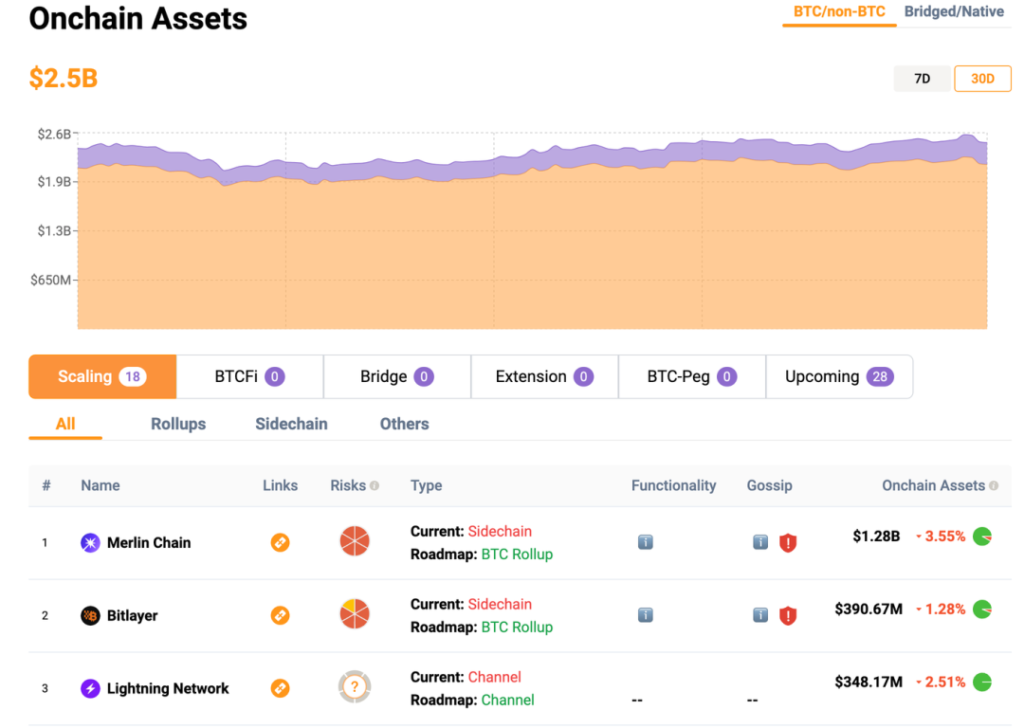
2. Stacks
Stacks is a side chain closely integrated with Bitcoin and has a unique consensus mechanism and smart contract functions. The project uses an innovative proof-of-transfer (PoX) consensus mechanism. In PoX, miners participating in the consensus no longer destroy Bitcoins, but distribute them to a group of participants who maintain network security.
Stacks plans to launch the Nakamoto upgrade this year, which will make it a true Layer 2 solution. Currently, the upgrade code has been completed and will be deployed to the mainnet soon. The upgrade aims to significantly increase transaction throughput, achieve 100% Bitcoin transaction confirmation finality, and reduce transaction confirmation time from 10 minutes to approximately 10 seconds.
The Nakamoto upgrade will also enhance Stacks’ security, bringing it in line with the Bitcoin network. Even in the event of a reorganization of the Bitcoin network, most Stacks transactions will remain valid, improving overall network reliability.
In addition to the Nakamoto upgrade, Stacks will launch sBTC, a decentralized, programmable 1:1 Bitcoin-backed asset that enables the deployment and transfer of BTC between Bitcoin and Stacks (L2).
sBTC enables smart contracts to write transactions to the Bitcoin blockchain, and in terms of security, transfers are guaranteed to be secure by the entire Bitcoin hashing power.
Stacks currently has a relatively rich ecological project, and the current TVL on the chain has reached 200 million US dollars.
For example, Alex is the DEX of the Stacks ecosystem and also includes Launchpad functions. It currently has a TVL of 30 million US dollars; the liquidity staking project StackingDAO has locked in 100 million US dollars of liquidity.
Token STX also has the highest market value in the current Bitcoin sidechain ecosystem, and is the only token in the top 100 market value of CoinMarketCap.
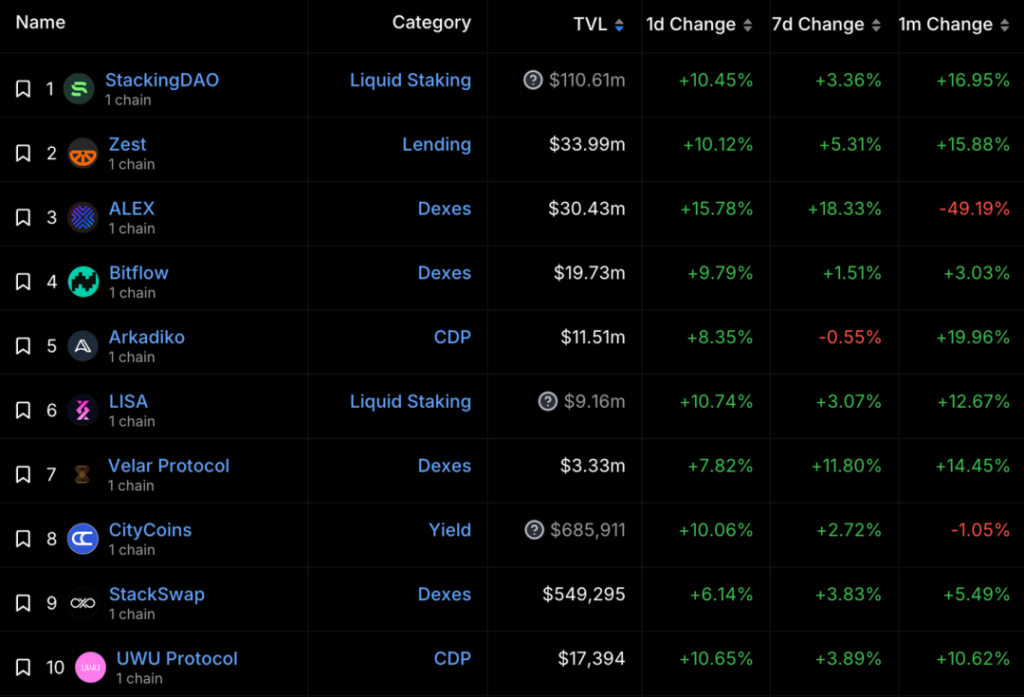
3. Citrea
Citrea is an innovative Bitcoin extension suite solution that implements extension suites within the Bitcoin network through zero-knowledge proof technology, ensuring on-chain verifiability and data availability. The core advantage of the project is that it can be used without damaging the security of Bitcoin. security or changing its consensus rules while supporting more complex applications.
Citrea’s technical features include:
- Batch large numbers of transactions and generate concise validity proofs in zkVM
- Burning and local verification of validity proofs implemented for the first time in the Bitcoin blockchain
- The native ZK proof validator smart contract on Bitcoin L1 is built into BitVM.
Unlike traditional sidechains, Citrea builds a modular ecosystem for Bitcoin by performing sharding, keeping settlement and data availability on the Bitcoin main chain.
The project announced in February this year that it had completed a US$2.7 million seed round of financing led by Galaxy.
Currently, Citrea's public developer network is online. There are three one-week test tasks from July to August. Users can participate in the test and obtain NFT rewards in Galaxy.
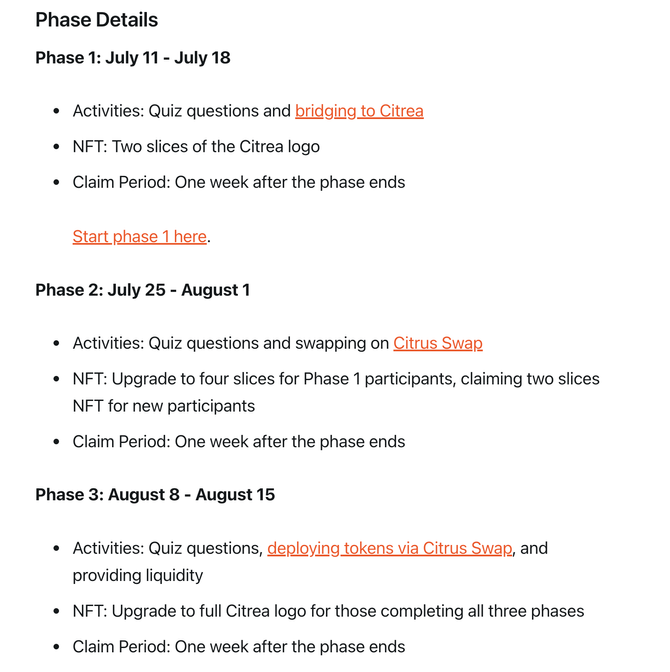
4. Fractal Bitcoin
Fractal BTC is a Bitcoin Layer 2 solution developed by the Unisats team. It is the only solution that uses Bitcoin Core code to recurse unlimited layers of extensions on the Bitcoin blockchain, using BRC-20 tokens Sats as Gas fees. .
Fractal forked the Bitcoin Core code and made some key adjustments. The main features include shortening the block confirmation time to 30 seconds. The project plans to implement "controversial" operation code proposals such as OP_CAT and ZK native verification OPCode faster than the Bitcoin mainnet. In the future, smart contracts can be implemented through instruction codes.
The consensus mechanism uses Proof of Work (PoW) consistent with Bitcoin, and miners can use existing ASIC, GPU and other hardware devices for mining.
Fractal introduces the innovative Cadence Mining method, where two out of every three blocks are mined permissionless and one is mined through merged mining, balancing decentralization and security.
As a native extension solution, Fractal supports cross-layer secure asset transfer starting from the Bitcoin main chain, including decentralized bridging of assets such as BRC-20 and Ordinals.
Main applications include Fractal swap (flexible BRC20 exchange mechanism), Asset bridge (asset bridge between the mainnet and Fractal network) and UniWorlds (applications that introduce real-world transactions).
Unisats completed Pre-A round of financing in May this year, led by Binance. The specific financing amount was not disclosed.
Unisats is one of the most reliable infrastructures in this wave of Ordinals. The wallet and trading platform have also occupied the minds of users to a large extent. With a good user group and trading foundation, it is up to Unisat to develop such a shadow. The chain will not appear obtrusive, and the new round of financing also shows stronger resource capabilities, and we look forward to more pioneering applications.
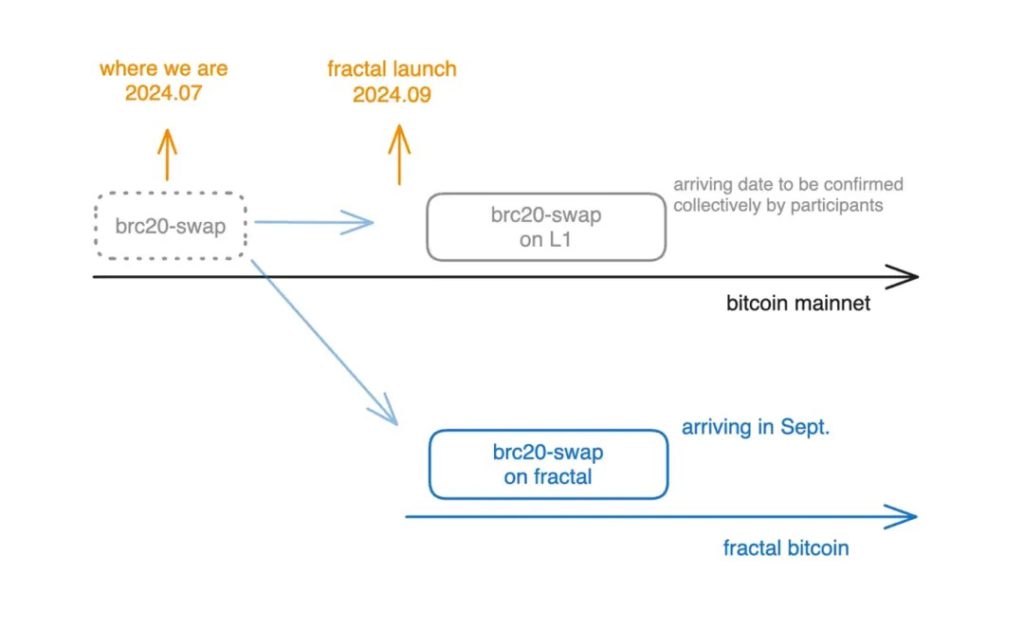
5. Botanix
Botanix Labs is building the first fully decentralized EVM equivalent L2 on Bitcoin, combining the ease of use and versatility of EVM with the decentralization and security of Bitcoin.
The project utilizes Bitcoin's Proof of Work (PoW) as the base settlement and decentralized layer 1, while adopting a Proof of Stake consensus model. Stake (expressed in Bitcoin) is securely stored on the decentralized network Spiderchain, protected by decentralized multi-signatures by a randomly selected subset of participants.
Botanix allows users to stake Bitcoin directly on the Bitcoin network. After the user connects to MetaMask, a special Bitcoin deposit address will be generated, which encodes the user's EVM address in Taproot.
This innovative mechanism allows users to transfer Bitcoin directly from major exchanges to this deposit address, and then use the Bitcoin in MetaMask. The user experience is similar to Ethereum, but you are actually using Bitcoin for everything. This innovative approach of combining Bitcoin with EVM compatibility is expected to bring more application scenarios and user-friendly experiences to the Bitcoin ecosystem.
Botanix announced the completion of an $8.5 million seed round in May this year.
The Botanix testnet will be launched on November 30, 2023. As of June, the testnet has connected more than 300,000 wallet addresses, and two applications, AvocadoSwap and Bitzy, have been launched for interaction.

Client Validation RGB++
1. Nervos
Nervos Network is one of the scalable solutions for Bitcoin, adopting a more native approach and modifying the UTXO model that supports Bitcoin. It uses a layered architecture, including an L1 blockchain (Common Knowledge Base, CKB) that can be expanded through payment channels and RGB++.
CKB takes advantage of the natural structural advantages of being POW+UTXO like BTC, and combines it with innovative "isomorphic reflection" technology to formalize and "seamlessly migrate" the client verification of RGB to CKB, named RGB++. This method achieves great functionality and flexibility expansion at the expense of a little privacy, and security is strongly tied to BTC L1.
The RGB++ protocol is a suite of improvements and extensions to the original RGB protocol. The original RGB protocol is an L2 solution designed to enable smart contracts and asset issuance without changing the Bitcoin mainnet. It realizes asset transfer by tying assets to specific Bitcoin UTXO, mainly relying on client verification, and transactions are processed and verified off-chain.
Nervos Network solves the limitations of raw RGB through the RGB++ protocol. RGB++ uses CKB as the data availability and execution layer of Bitcoin, and reflects Bitcoin UTXO to CKB's Cell through isomorphic binding technology, achieving seamless integration with CKB Turing-complete smart contracts.
RGB++ introduces on-chain verification of key transaction elements, improving security and data availability. It also enables transaction folding, ownerless contracts with shared states, and non-interactive transfers, and enables cross-chain transfers of Bitcoin without the need for cross-chain bridges.
As an asset issuance protocol, RGB++ gives BTC L1 the ability to issue new RGB assets. RGB++ asset transactions on CKB are completely Turing-complete and programmable. Not only RGB++ assets can be reflected to CKB, Atomic, Rune and other assets with UTXO characteristics can also be reflected to CKB for Turing-complete transactions.

2. UTXO Stack
UTXO Stack is a modular Bitcoin second-layer chain issuance platform, which can be understood as a "one-click chain issuance" platform. It focuses on issuing Bitcoin second-layer chains based on the UTXO isomorphic model.
The project was developed by the CELL Studio team, a blockchain software company incubated by the Nervos Ecological Fund. The founder of the company, Cipher, is also the proposer of the RGB++ protocol. The purpose of its establishment is to promote the development and prosperity of the Nervos ecosystem.
UTXO Stack is actually the strategic layout of the Nervos project in the Bitcoin ecosystem. It is positioned to provide technical support and modular services for projects that want to develop UTXO model second-layer chains on Bitcoin.
The UTXO Stack can be compared to the Op stack in the Ethereum ecosystem. Just like Base is Ethereum Layer 2 built on the OP Stack toolkit, UTXO Stack provides similar functions for the Bitcoin ecosystem.
Bitcoin Layer 2 built through UTXO Stack can natively integrate the capabilities of the RGB++ protocol and can use CKB as the data availability layer. This makes UTXO Stack equivalent to the OP Stack + EigenLaye of the Bitcoin ecosystem.
These Layer 2 based on UTXO Stack can adopt the POS consensus mechanism to ensure the security of the second layer chain by pledging BTC, CKB and BTC L1 assets.
Restaking
The security of many emerging PoS chains is limited by the scale of the on-chain economy, and there is a risk of being controlled. The Bitcoin pledge and re-pledge protocol provides security for the PoS network by introducing the Bitcoin asset with the strongest consensus.
Especially under the education of EigenLayer and a number of re-pledge projects, the concept of re-pledge has been deeply rooted in the hearts of the people, and it is more natural to derive this concept into the Bitcoin ecosystem.
The advantages of Bitcoin re-staking include:
- Bitcoin is the most secure blockchain in existence, with an unparalleled trust foundation.
- Enable Bitcoin, which has a market capitalization of approximately US$1.3 trillion, to create sustainable income opportunities for holders.
- Bridge the gap between PoW and PoS blockchain systems and take full advantage of Bitcoin's security advantages.
- Bitcoin pledged derivative assets have huge market prospects, including diversified ecological applications such as the construction of mortgage-minted stablecoins, lending and derivative circle loans and structured products.
1.Babylon
Babylon is a Bitcoin staking protocol that allows Bitcoin holders to mortgage BTC on the PoS chain and earn income while protecting the security of the PoS chain, applications, and application chains.
Unlike traditional methods, Babylon uses remote equity staking without the need to bridge, wrap or host Bitcoin on the PoS chain. This method not only allows Bitcoin holders to benefit from idle BTC, but also enhances the security of the PoS chain and application chain.
Babylon's core functions expand the application scenarios of Bitcoin, making it not limited to value storage and exchange, but also extending Bitcoin's security capabilities to more blockchains.
The project introduced the Bitcoin timestamp protocol to place event timestamps from other blockchains onto Bitcoin so that these events enjoy the same timestamp security as Bitcoin transactions. This enables functions such as rapid staking unbundling, reduced security costs, and cross-chain security.
From a technical perspective, Babylon consists of two main protocols:
- Bitcoin Timestamps: Send compact, verifiable timestamps of any material (such as a PoS blockchain) to Bitcoin.
- Bitcoin Staking: Allows Bitcoin assets to provide economic security to any decentralized system in a trustless and self-custodial manner.
In May this year, Babylon announced the completion of a $70 million financing round led by Paradigm.
Project development stage: Bitcoin Staking Testnet-4 has been completed. When the subsequent test network is opened, it is recommended to actively participate in the staking test and complete the corresponding galactic tasks.
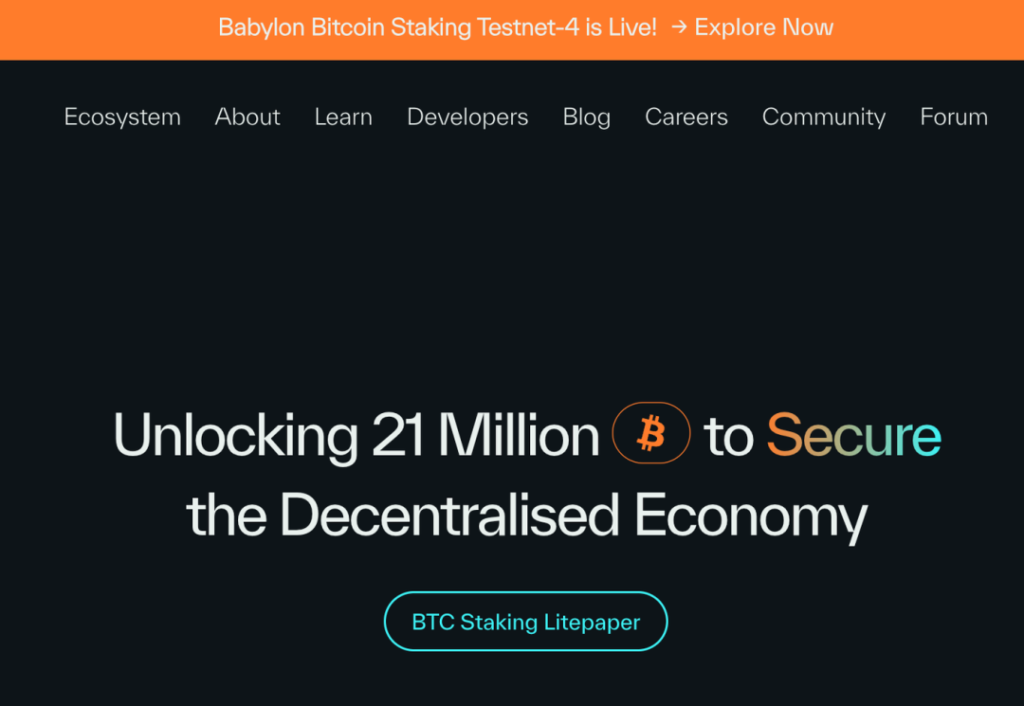
2. Lorenzo
Lorenzo Protocol is a liquidity re-pledge protocol built on Babylon, aiming to enhance the application capabilities of Bitcoin by introducing liquidity staking and privacy enhancement features. This project allows Bitcoin holders to convert BTC to stBTC, participate in Bitcoin mortgages and receive rewards without locking up funds.
Lorenzo innovatively divides Liquid Re-pledge Tokens (LRT) into Liquid Principal Tokens (LPT) and Yield Accumulation Tokens (YAT). This gameplay is similar to Pendle's PT and YT. This decoupling mechanism provides a flexible solution for liquidity re-staking, enhancing the liquidity and accessibility of Bitcoin re-staking.
An important feature of the project is that there is no minimum staking time required and there is no "untie" time. This means investors can avoid the risk of being locked into staking and remain flexible when the market fluctuates.
Lorenzo provides an EVM-compatible Cosmos chain backed by the shared security of Babylon BTC for the issuance and settlement of BTC liquid re-collateralized tokens. This provides the basis for cross-chain operations and wider DeFi applications.
In the future, Lorenzo plans to build a series of financial products, including interest rate swaps, lending agreements, structured BTC income products and stable coins. The project focuses on building an efficient Bitcoin liquidity distribution market and liquidity assetization.
Although the specific financing information has not been made public, it has received support from Binance Labs. The Beta mainnet is currently online.
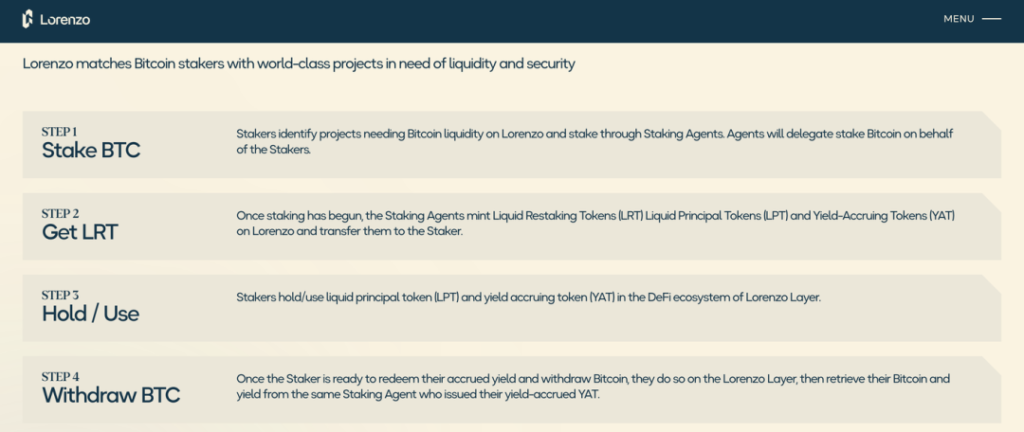
3. Chakra
Chakra is an innovative Bitcoin re-pledge protocol driven by ZK technology. It introduces the concept of SCS (Settlement Consumer Service) and integrates Bitcoin re-pledge into the PoS system.
The core technical features of the project include:
- Lock BTC using time lock method
- Generate proof of staking events through ZK-STARK technology
- Off-chain verification mechanism, no need to directly connect to the BTC network
- Leveraging STARK technology to ensure high security without the need for trusted settings
Chakra's ZK Proofs design has the potential for multiple scenarios, including artificial intelligence, DeFi, games and other fields. Users only need to pledge once, and can expand the suite to multiple application scenarios through authorization and obtain multiple pledge benefits.
The project has the potential to build an L2 network based on pledge proof, allowing stakers to participate in L2 consensus and governance. These L2s will share the security of Bitcoin while providing stakeholder-maintained data availability services and execution environments.
Chakra plans to integrate with Babylon to expand its application scope in the Bitcoin ecosystem.
In April 2024, the project announced investment institutions, mainly including STARKWARE, ABCDE and some Asian miners.
Project development progress:
- Has been launched on the testnet and participated in Babylon testnet-4
- Chakra emerges as #1 finality provider in Babylon Testnet-4
- Confirmed TVL of 258 Signet BTC, accounting for 36% of Babylon’s total TVL, showing strong early performance
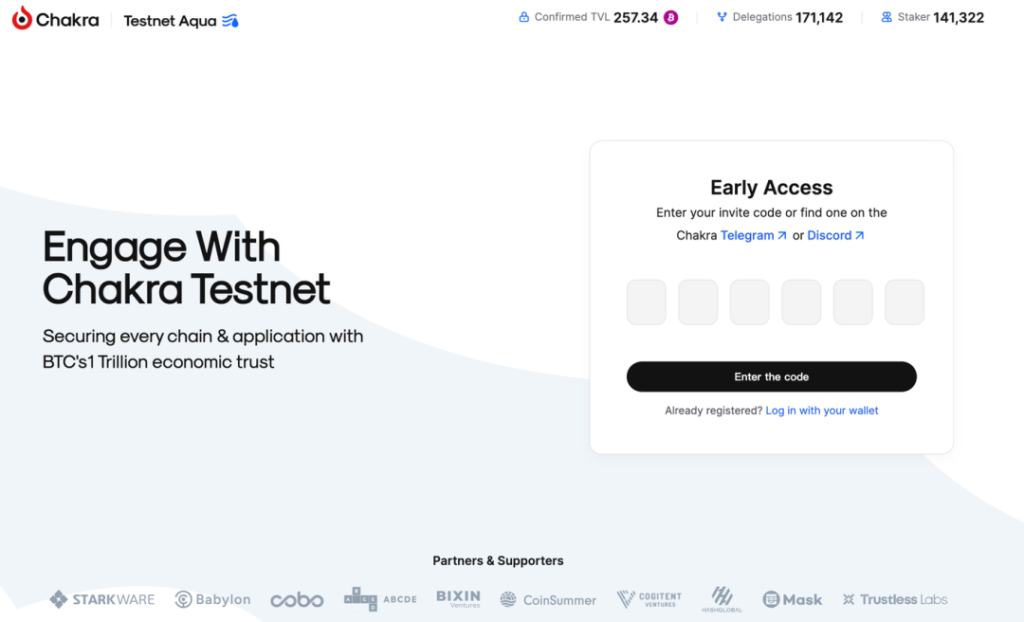
4. BounceBit
BounceBit is an innovative BTC re-hypothecation infrastructure that provides a base layer for diverse re-hypothecation products. The project adopts a CeFi + DeFi hybrid framework, allowing BTC holders to obtain income from multiple channels.
The core idea is to advance Bitcoin by using the asset rather than changing the Bitcoin blockchain. The main strategies include funding rate arbitrage and establishing on-chain certificates for re-staking and mining.
Layer1 of BounceBit contains two key components:
- Dual-coin PoS : a hybrid consensus mechanism where the validator can accept both BBTC and BB tokens
- Native LSD module : allows to delegate pledges to validators and receive LST certificates in return
The CeFi layer of the project includes:
- Compliance custody : ensure the security of user funds through MPC wallet
- Over-the-counter settlement : safely utilize CEX liquidity and trade over-the-counter settlement
- BTC re-pledge : ensuring the safety of funds through regulated custody services, users receive bounceBTC (BBTC) as a pledge certificate
- BounceClub : No-code DeFi experience building platform
- Liquid Custody : Introducing the concept of Liquid Custody Tokens (LCT) to maintain the liquidity of mortgage assets
BounceBit completed a $6 million seed round of financing, co-led by Blockchain Capital and Breyer Capital.
The project plans to launch the on-chain brokerage service Superfast in the third quarter of 2024, aiming to solve the liquidity problem of BBTC and BBUSD and launch a large-scale BB reward activity.
Superfast will combine the concepts of LCT and CEX to achieve fast settlement and high liquidity of on-chain transactions, and support the super-liquidity exchange of BB, BBUSD and BBTC.
BounceBit's innovative model is expected to provide Bitcoin holders with more re-pledge options and income opportunities, while promoting Bitcoin's application expansion suite in the DeFi field. The project’s hybrid architecture and diversified product line show its potential in Bitcoin financial innovation.
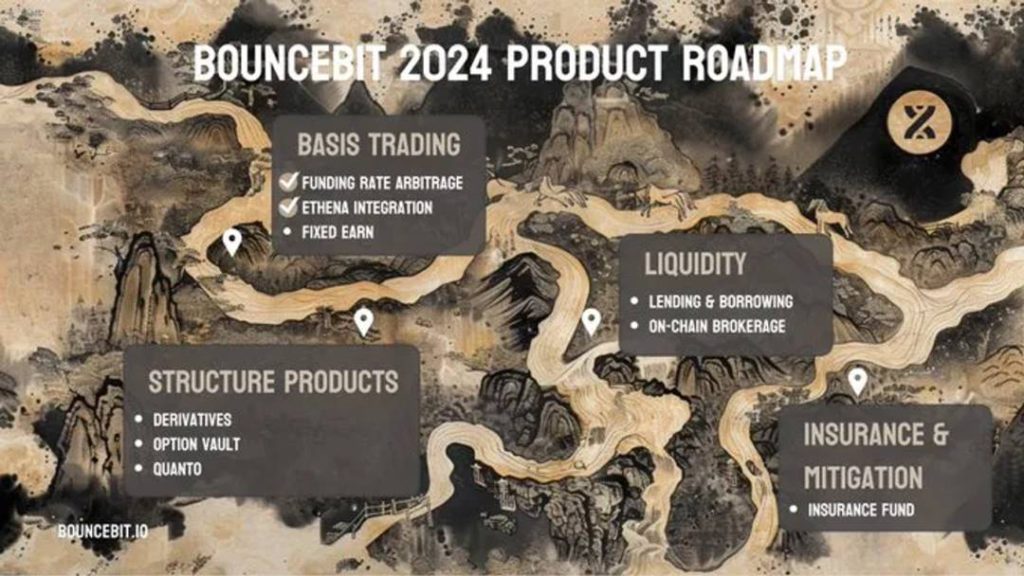
5. Lombard
Lombard is a Bitcoin staking protocol designed to achieve Bitcoin staking and liquidity release through the Babylon platform.
The core product LBTC is a cross-chain liquid Bitcoin token with yield, backed by BTC at a 1:1 ratio. When users stake Bitcoin through Babylon, Lombard uses LBTC tokens to represent the liquidity and returns of staking Bitcoin.
The main innovation of the project is to allow profitable BTC to move across chains without dispersing liquidity, which may become an important catalyst for introducing large amounts of new capital into the DeFi ecosystem.
Lombard plans to integrate LBTC into Ethereum's DeFi protocol later in 2024, which will greatly expand the application scope and potential of Bitcoin in the DeFi field.
Lombard recently announced the completion of a $16 million seed round led by Polychain
Currently, Lombard is still in the development stage and the testnet has not yet been launched.
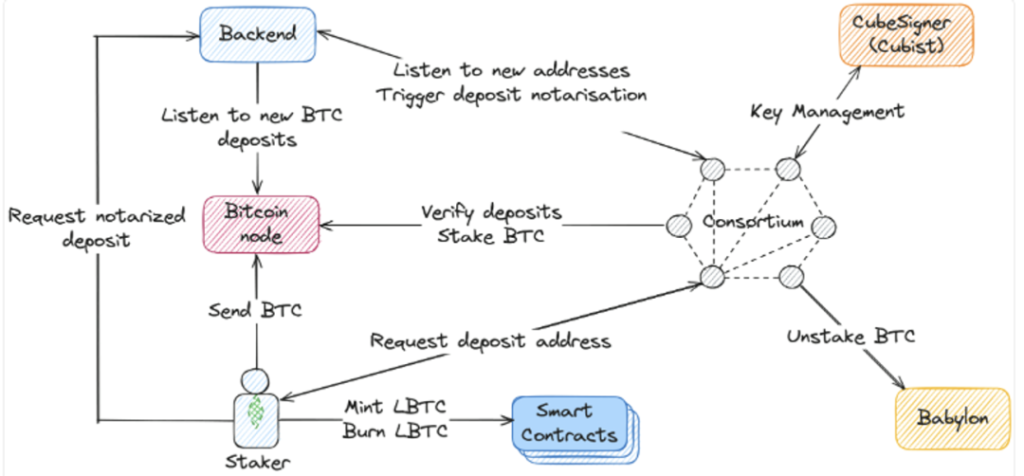
DA Layer
There are significant differences between Bitcoin and Ethereum in terms of ecological maturity, technical genes and mainnet characteristics. Ethereum’s Data Availability (DA) layer is a further enhancement to its already relatively rich mainnet functionality. In contrast, the Bitcoin mainnet’s transaction processing capacity is extremely limited and can only process about 4 transactions per second.
Therefore, for Bitcoin, the development of the DA layer is more like solving an urgent need rather than a simple functional enhancement. There is less competition in this track, and currently only Nubit is established.
Nubit
Based on the economic security of Bitcoin, Nubit has built a highly scalable suite and a secure data availability layer (Data Availability Layer). It is committed to greatly increasing the data capacity of Bitcoin without sacrificing security, providing services for Ordinals, Secondaries, and others. Provides support for applications such as tier scaling solutions, price oracles, and indexers.
Nubit integrates Babylon's PoS staking solution to ensure that the economic security of the entire DA ecosystem is determined by Bitcoin's native pledgers. This allows Bitcoin holders to participate in and strengthen the Nubit system to build the most secure and scalable suite. Data availability layer.
In addition to the DA layer, Nubit will also develop an execution layer based on the Nubit DA framework. This framework is stateless and efficient, allowing users to reliably verify calculation results, which will be widely used by Bitcoin wallets and users.
In terms of financing, in June this year, it announced a seed round of US$8 million led by Polychain (total financing of US$12 million).
Currently, the Alpha testnet is open, and activities that can be participated in include: Community Assemble, Light Node Quest and the Testnet Adventure that will be opened in the future.
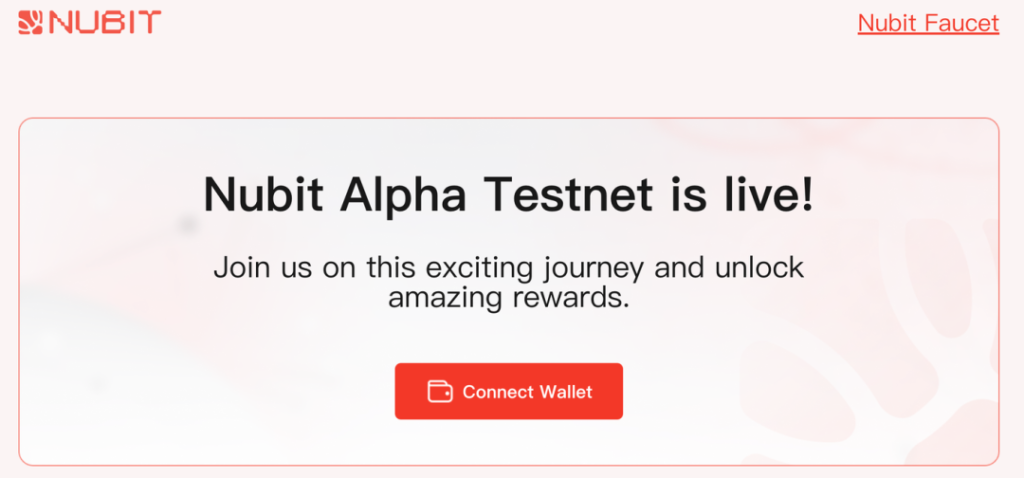
Summarize
This article only briefly introduces the progress of some ecological projects from the perspective of the Bitcoin layer. In fact, the Bitcoin ecosystem also includes more infrastructure, such as cross-chain bridges, wallets, oracles, various asset protocols and DeFi projects, etc. Its scope is too wide to list.
Our discussion is only for the purpose of provoking some ideas, and aims to gain a glimpse of the characteristics of the ecological development of Bitcoin through these cases.
The development of the Bitcoin ecosystem is facing the challenge of balancing technology nativeness and user needs. This challenge is reflected in the gradual formation of two forces in ecological development.
The native technology group is committed to exploring the potential based on Bitcoin's unique UTXO model and instruction code language, and developing projects that truly conform to Bitcoin's design philosophy.
This approach, while technically more challenging, better maintains consistency with Bitcoin’s core values. Through the analysis of a large number of projects, we found that native technology projects generally have strong academic backgrounds, which reflects the high difficulty of developing Bitcoin ecological infrastructure.
Due to the limitations of the Bitcoin network itself, these projects require the use of new technologies such as advanced cryptography to solve challenges, and therefore require very strong academic skills.
Relatively speaking, the user-oriented group pays more attention to quickly responding to market needs and using existing mature technologies to quickly develop and deploy products to serve the existing user groups.
These projects use more of the experience of Ethereum, and their advantage lies in reducing user education costs. However, the disadvantage of this method is the lack of innovation on the application side. Most implementation projects are basically replicating Ethereum solutions on the side chain.
For every cycle, innovation is an indispensable key element. In the BTC ecosystem, technological innovation should be more reflected in breaking through its original limitations.
The Babylon project is a great example of how Bitcoin’s utility can be enhanced through native technological innovation. By using innovative technologies such as Bitcoin timestamps, Babylon allows users to earn additional income while retaining ownership of BTC.
This BTC interest-earning method not only minimizes additional asset security risks, but also creates new value for users, so it is very attractive to market users. Based on these observations, we believe that the future development path of the BTC ecosystem may be:
Through continuous innovation and improvement of native technology, we develop emerging protocols and projects to improve the capital utilization of BTC.
This method can not only break through the original technical limitations of Bitcoin, but also meet market demand while maintaining its core value, laying a solid foundation for the long-term and healthy development of the Bitcoin ecosystem.








